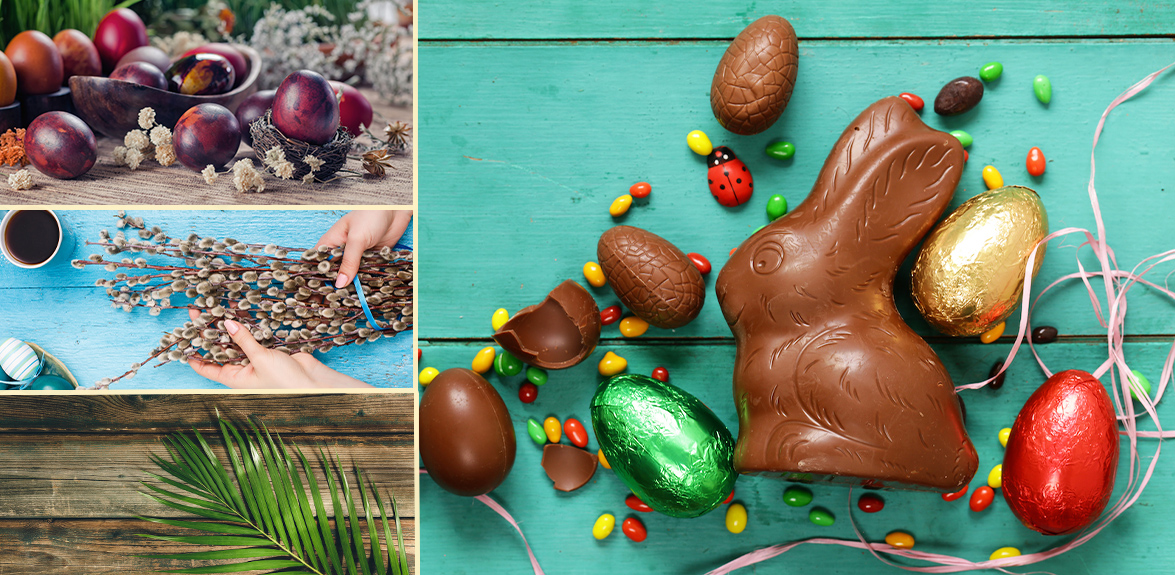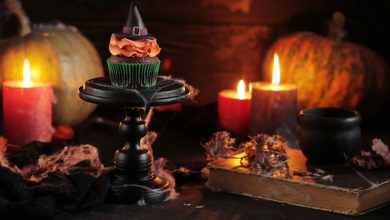Blogs
Easter, Passover and Chocolate Bunnies
Nowadays, traditional Easter family activities vary by region and from family to family. Children often hunt for Easter eggs and brightly-dyed hard-boiled eggs. Over the years traditions have evolved, rather than dyed eggs, the option of filling plastic eggs with candy or small denominations of money has become popular. However, have you ever wondered where, why and how the tradition started?

Candy & Chocolate Bunnies
Candy became a traditional gift for Easter because children often broke their Lent fasts with sweets. The adults tended to share bouquets of flowers, baskets, greeting cards, and many gathered at the table for a feast. Still, such celebrations are often secularized and focused on children rather than the religious aspect of the holyday.
While Canada has no official religion because of the support for religious pluralism and freedom of religion being an important part of its political culture. Christianity currently, has the largest following in Canada, with Roman Catholics having the most adherents.
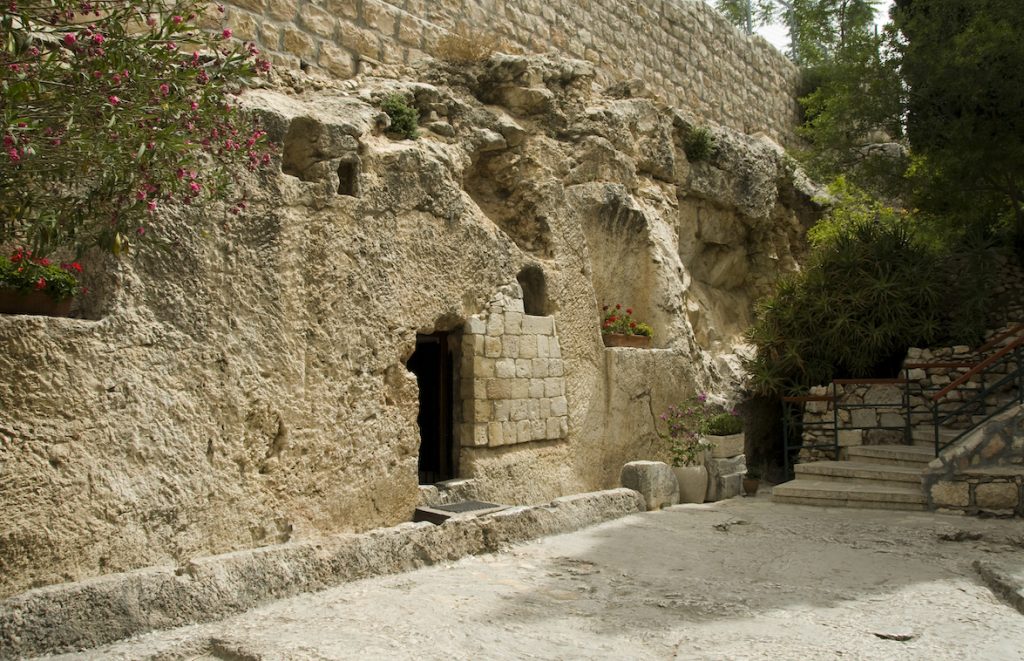
Easter, Pascha (Greek, Latin) or Resurrection Sunday
Easter, also called Pascha (Greek, Latin) or Resurrection Sunday, is a religious holiday commemorating the resurrection of Jesus Christ from the dead. The holiday is described in the New Testament as the third day after his burial, following his crucifixion, by the Romans on Golgotha hill, outside Jerusalem’s walls. Jesus’ crucifixion took place on a Friday, which is known today as Good Friday, around year 33 AD.
The meaning of this important Christian celebration is Jesus Christ’s victory over death, as his resurrection symbolizes the eternal life that is granted to all who believe in God.
Together with the holidays related to it: Palm Sunday, Good Friday and Easter are moveable feasts that do not fall on a fixed date in the Gregorian or Julian calendars. Good Friday and Easter celebrations follow the cycle of the Sun.
Easter’s date is offset from the date of Passover and is therefore calculated based on a lunisolar calendar similar to the Hebrew calendar.
This year, Catholics and christians celebrated Easter on April 17th, while Christian Orthodox celebrate one week later on April 24th.

Palm Sunday
The “Holy Week” starts with Palm Sunday, or the “Entry of the Lord into Jerusalem” when it is said that Jesus was greeted by people with palm leaves and flowers, an event mentioned in each of the four canonical Gospels.
In ancient times, palm branches symbolized goodness and victory; they were often depicted on coins and important buildings.
In Christian Orthodox countries, such as Ukraine, Romania, and Greece, to mention a few, it is common that the middle names of people are given after Saints, such as Peter/Petru or Andrew/Andrei), or flowers and trees. Names such as Violet, Olivia, or Florentina are celebrated for Palm’s Sunday, becoming their name’s day too.

Willow Branches
According to the tradition, young women that went to church would bring home a willow branch, which would be kept until the next Palm Sunday, as a symbol of fertility and life.
In the Bible, the willow is always associated with a brook or river, as it gives the willow a perpetual source of nourishment.
Passover or Pesach is a major Jewish holiday and one of the most widely celebrated.
Initially, during the existence of the Temple in Jerusalem, Passover was a spring festival connected to the offering of the “first-fruits of the barley,” as barley was the first grain to ripen and to be harvested.
However, the verb pasàch, which is first mentioned in the Torah’s account of the Exodus from Egypt, and commonly held assumption is of the meaning “He passed over,” in reference to God “passing over” or “skipping” the houses of the Hebrews during the final of the Ten Plagues of Egypt.
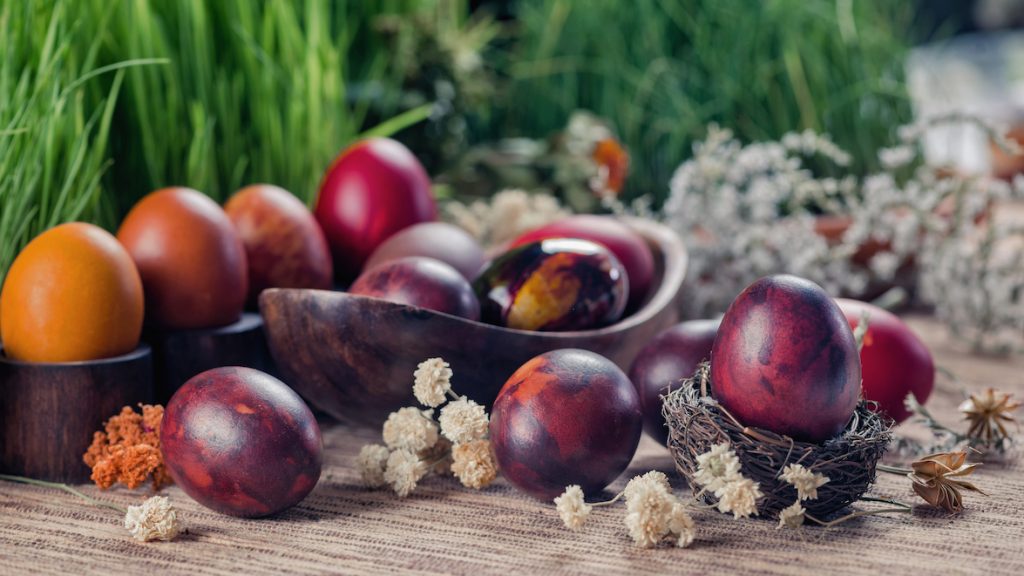
Easter eggs
Easter customs vary across the Christian world and include the Holy Light, sunrise services, exclaiming the Paschal greeting, clipping the church, cooking lamb dishes and decorating Easter eggs.
Orthodox Christians describe the Holy Fire or “Holy Light” as a miracle that occurs every year at the Church of the Holy Sepulchre in Jerusalem on Great Saturday, the day preceding Easter.
A blue light is said to emit within Jesus Christ’s tomb, rising from the stone bed believed to be that upon which Jesus’ body has been placed for burial. This fire is then used to light the candles of the clergy and pilgrims in attendance.
Although eggs, in general, are a traditional symbol of fertility and rebirth, in Christianity, for the celebration of Eastertide, Easter eggs symbolize the empty tomb of Jesus, from which Jesus resurrected. The legend says that Virgin Mary offered a basket of eggs to her son’s guards so they would treat him better during his martyrdom on the cross, but the eggs soon turned red from Jesus’ blood.
Easter eggs are stained the colour red in the memory of the blood of Christ shed at the time of his crucifixion.
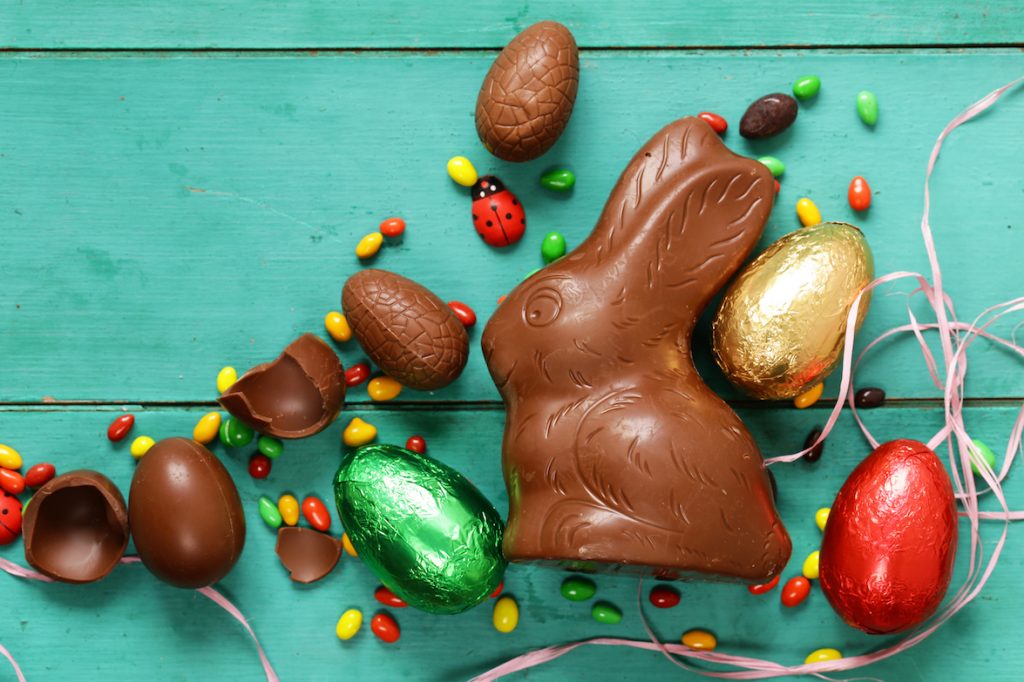
Easter Treats
Today there are a lot of cute bunnies on television.
At the same time, they make you smile while inviting you to shop and purchase chocolate eggs, and more recently, even squirrels to children, for Easter, which sadly makes the day a consumerism holiday, rather than remembering and honouring the historical meaning of Holy Week.
The joy of children’s surprise is wonderful. I believe happy homes are filled with laughter and chocolate, and also learning about the true meaning of Easter.


